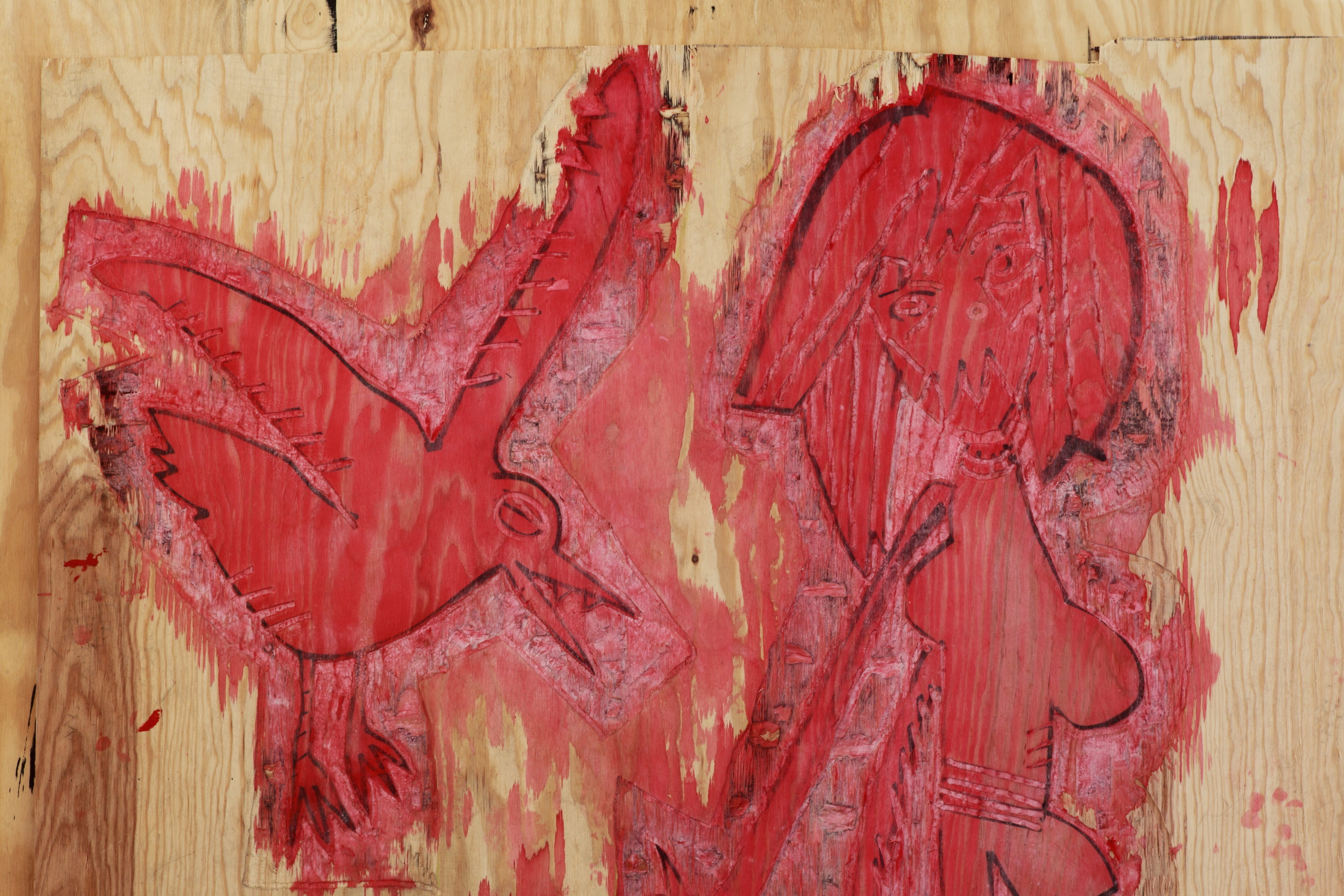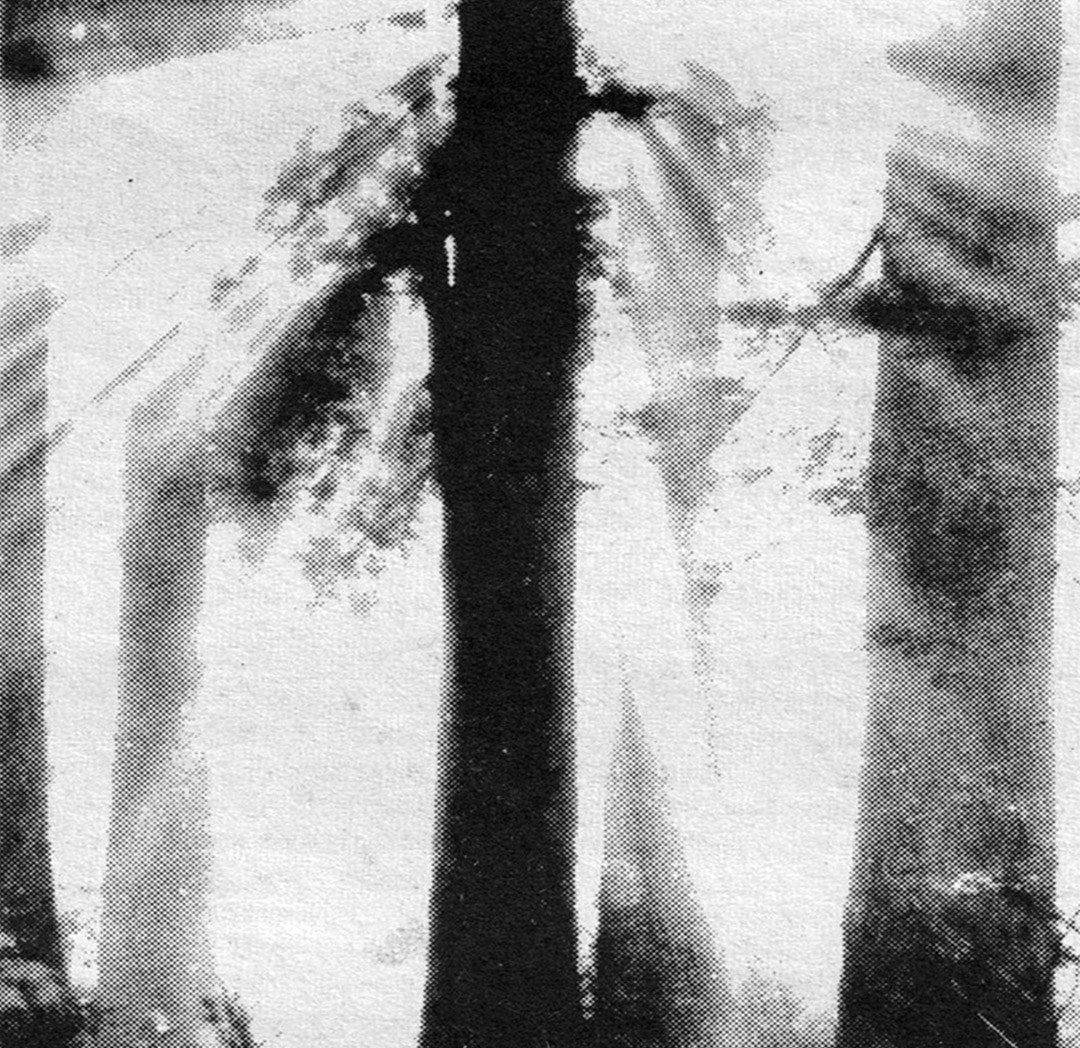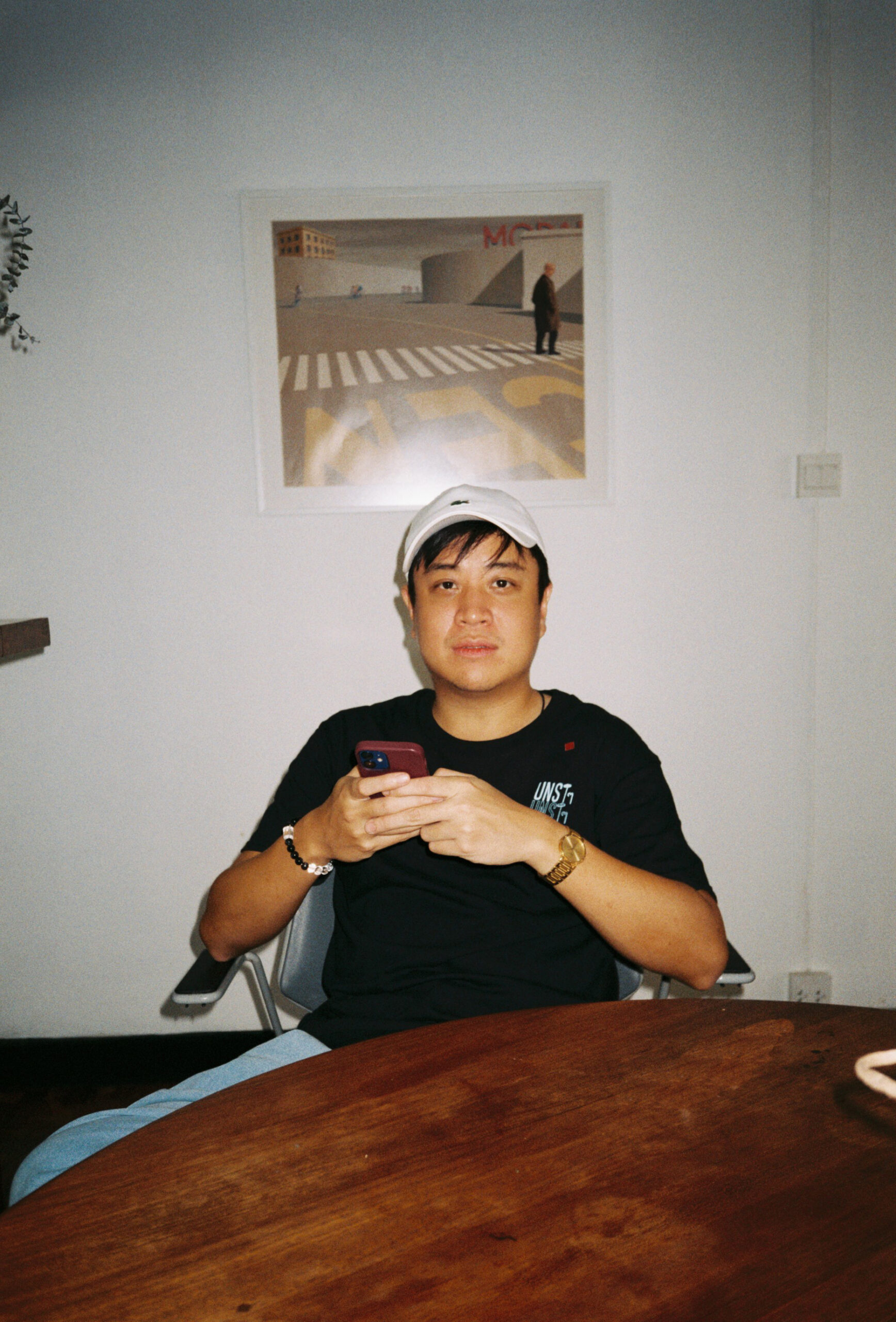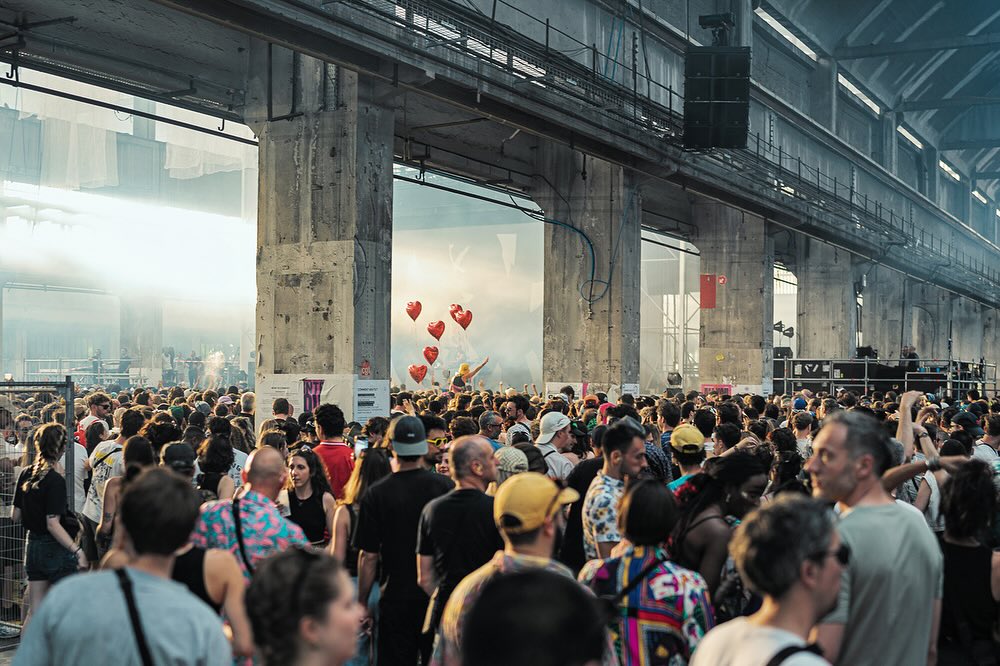Cedar Lewisohn – Influences

Acclaimed artist Cedar Lewisohn's brand new show 'Plywood Transmission' will be taking place at Cock 'N' Bull Gallery from Friday 12th December – Friday 9th January. Cedar's work revolves around the use of woodblocks and his limitless creativity, couple with the sheer complexity of the artwork, makes this a must-see exhibition. We asked Cedar to let us know some of the pieces of art that he flt had most influenced this exhibition;
1

This drawing of an African statue is typical of my way I see African art and culture. The drawing maybe looks a little bit Piccaso-eque, and I’m interested in the way that Modernist artists such as Picasso appropriated African art and culture. My take on this is not a heavy critique of those Modernist artists, many of them I admire hugely. I am more interested in the way visual styles can become absorbed and how that affects the way large numbers of people understand those cultures. I for example, am much comfortable talking about Picasso than I am about African sculptures… So it takes Picasso (and others like him), to introduce me, who has African heritage, to see and investigate African sculptures such as the one in the drawing.
2

Recently, I have been visiting lots of museums around Europe and making copies of details of works. When I’m in these museums and I see an artwork that I like the look of, I become extremely excited. There is a word, scopophilia, people who love looking… I think I suffer from this, with artworks I admire. I’d almost describe the feeling like having an orgasm… but It’s not sexual. It’s an intense sense of extreme pleasure that starts with your eyes and washes over your entire body. I can have this sensation looking at artworks, and no one would know it by looking at me. So I go around museums seeking out this feeling. I don’t need any information about the artwork, I never read titles or wall texts, I just need to look at the work. I research the artist later. When I’m back in the studio, I make drawings to remind me of the experience. This is a drawing I made from a detail of a painting by the German artist Max Beckman. I love Max Beckman’s work, as well as lots of German artists who made work soon after the first and second world wars. I saw the original image for this in a museum in Cologne.
3

When I’m travelling I sometimes make water colours. It’s an easy thing to do in hotel room. This image was from a trip I did about a year ago to São Paulo. I was the producing a project with artist Mike Ballard (Cept). We went for a walk and saw there was a huge protest happening on Paulista Avenue. I’m always happy when I see people fighting back against oppressive ideas. There is energy in Sao Paulo that I love. Particularly in the food. I wrote a blog about the food I ate on that trip which you can read here.
4

I’m currently doing a residency at the Jan Van Eyck Accademie, in Maastricht. When I arrived, around eight months ago, I immediately started t make a series of drawing that are virtually all black. This particular image is made in response to an image by the artist Karl Schmidt-Rottluff. He’s another German expressionist that I go weak at the knees for. With these black drawings I want to look deeper at these artists, and somehow suck out all the visual information I can from them, leaving “just” enough behind, so that a viewer might get the a feeling of the what I was looking at. I’ve made about a hundred of these drawings, and now I’m working on a massive hand printed book of around thirty five of them. The book is going to be pretty big, hand bound, and just page after page of these virtually black images. I’m not sure how it will turn out, or even if we will pull off making it.. but hopefully, it will create an extremely unique viewing experience for people looking at it. Something time based, but physical. Maybe, something for the future, made from fragments of the past.
5

I love weird symbols and signs that I don’t necessarily know the meaning of. I particularly like symbolism related to the masons. I find the idea of hidden meaning that surround us every day, in the way our city are constructed and subliminal messages being transmitted, kind of funny and creepy at the same time. A couple of years ago when the Olympics where in London, I made a drawing of the pop band Take That signing the song “Rule the World” at the opening ceremony of the Olympics. Was the Olympics a huge ocult ceremony? I’m open minded.
6

I usually make quick drawings, which I use as a starting point for my woodcuts. But I’ve recently started doing some slower drawings. This one is based on Le Jugement Dernier from the late 1390’s, I think. I first saw the image in a book I brought in a junk shop in Liege. It’s all in black and white and the texts are in French, so I hardly understand them. After I made the drawing, I saw the original painting in Royal Beaux Art Museum in Bruxelles. I’m guessing the detail of the original painting I copied is showing people being dragged off into hell, by demons. What I think my version does is turn the scene into some type of degraded doodle. You might do something like this while you’re on the phone. Image being kept on hold for an hour and making this.
7

This is a print from one of the new woodcuts I’m working on. I think I saw the image on vase in an archaeology museum in Istanbul. Its I was in Istanbul to do a talk or something. He’s called Anubis. I don’t know what the image means, but I have my own meaning for it. He’s an Egyptian god inside the temple. He sends off hallucinogenic radio waves. People walking through ancient temples can be driven mad by his cosmic vibrations, or they can walk past freely. His powers work at a level beyond normal human comprehension, and it’s impossible to control how seeing him will affect you. There is shield to guard yourself against this threat, but it takes a thousand years of looking, in order to find it.
8

I’ve been interested and inspired by pictograms for a while now. I started incorporating them into my work maybe two or three years ago. There are lots of things which make pictograms appeal to me. Firstly, it’s the ease at which they give over information, and the general universality of them as a language. But because they are so easy to understand, it’s also easy to make new meanings from them, by making different combinations. I’m a big fan of the artist Gerd Arntz, who was extremely influential in the development of pictograms, and paired down forms of communication. Pictograms are normally very neat and slick, what I bring to the table is a certain, wonky, cack-handedness.
'Plywood Transmission' will be taking place at Cock 'N' Bull Gallery from Friday 12th December – Friday 9th January, click here for more information.


















Must Reads
David Holmes – Humanity As An Act Of Resistance in three chapters
As a nation, the Irish have always had a profound relationship with the people of Palestine
Rotterdam – A City which Bounces Back
The Dutch city is in a state of constant revival
Going Remote.
Home swapping as a lifestyle choice
Trending track
Vels d’Èter
Glass Isle
Shop NowDreaming
Timothy Clerkin
Shop Now